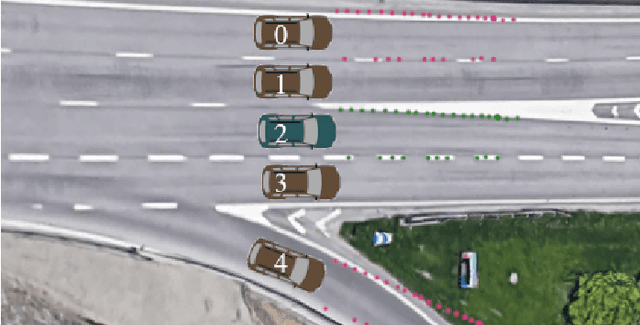Yuchuan Jin
A Multi-model Approach for Video Data Retrieval in Autonomous Vehicle Development
Oct 04, 2024Abstract:Autonomous driving software generates enormous amounts of data every second, which software development organizations save for future analysis and testing in the form of logs. However, given the vast size of this data, locating specific scenarios within a collection of vehicle logs can be challenging. Writing the correct SQL queries to find these scenarios requires engineers to have a strong background in SQL and the specific databases in question, further complicating the search process. This paper presents and evaluates a pipeline that allows searching for specific scenarios in log collections using natural language descriptions instead of SQL. The generated descriptions were evaluated by engineers working with vehicle logs at the Zenseact on a scale from 1 to 5. Our approach achieved a mean score of 3.3, demonstrating the potential of using a multi-model architecture to improve the software development workflow. We also present an interface that can visualize the query process and visualize the results.
Towards Accurate Ego-lane Identification with Early Time Series Classification
May 27, 2024



Abstract:Accurate and timely determination of a vehicle's current lane within a map is a critical task in autonomous driving systems. This paper utilizes an Early Time Series Classification (ETSC) method to achieve precise and rapid ego-lane identification in real-world driving data. The method begins by assessing the similarities between map and lane markings perceived by the vehicle's camera using measurement model quality metrics. These metrics are then fed into a selected ETSC method, comprising a probabilistic classifier and a tailored trigger function, optimized via multi-objective optimization to strike a balance between early prediction and accuracy. Our solution has been evaluated on a comprehensive dataset consisting of 114 hours of real-world traffic data, collected across 5 different countries by our test vehicles. Results show that by leveraging road lane-marking geometry and lane-marking type derived solely from a camera, our solution achieves an impressive accuracy of 99.6%, with an average prediction time of only 0.84 seconds.
 Add to Chrome
Add to Chrome Add to Firefox
Add to Firefox Add to Edge
Add to Edge